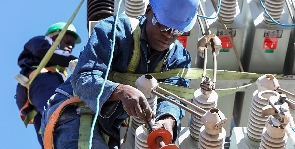The Energy Commission says without urgent steps to address the chronic debt in the energy sector, overall sector liabilities could hit US$12.5bn by the end of 2023.
The size of energy sector arrears and debts was about US$2.7bn as at January 2018, and it was forecast that an additional US$1.3bn would be added to this deficit in 2019, the commission said in its 2020 Energy Outlook report.
The sector debt has been due to short-term loans contracted by the power producers, take-or-pay arrangements, and the distribution utilities’ inability to collect adequate revenue to cover their operations, the report said.
It added that persistent untimely and insufficient payments for gas delivered also contributes to the huge debt burdens of the gas off-takers, most of them public entities.
“The power subsector debt alone is increasing by about US$300m every quarter,” it revealed, adding that in order to address the chronic debt challenges and to facilitate equitable distribution of all cash collected in the power sector value chain using the end-user tariff as a basis, the Cash Waterfall Mechanism (CWM) concept was instituted in 2016.
It is expected to be operational in 2020 and implemented through the development of a formula for adequate distribution of revenue to all stakeholders in the power sector value chain.
President Nana Akufo-Addo has bemoaned the situation where the country paid nearly US$1bn for unused power in the last two years due to excess electricity contracted on a take-or-pay basis with independent power producers.
Take-or-pay power generation contracts are common in the energy industry and oblige the off-taker (government, in this case) to pay for power supplied by the producer irrespective of available demand.
The payments over the last two years, which were financed with proceeds from loans, have compounded the country’s debt problems, coming on the back of an expensive financial system rescue that has so far cost the state close to GH¢18bn.
The government has consequently been holding talks with the IPPs to renegotiate or restructure the expensive power purchase contracts, hoping that a successful outcome would ease the debt burden in the energy sector.
The 2020 Energy Outlook report said the Energy Sector Recovery Program (ESRP) has outlined more actions that the government must take to improve the financial health of the energy sector.
The ESRP is a roadmap of immediate, near-term, and medium-term actions needed to achieve government’s aim to bring the sector into balance by the end of 2023, and a commitment by the government to fund the annual sector shortfall (with sector stabilisation payments) from 2020 onwards until the sector is in balance to prevent further accumulation of arrears.
Business News of Saturday, 6 June 2020
Source: thebusiness24online.net

















